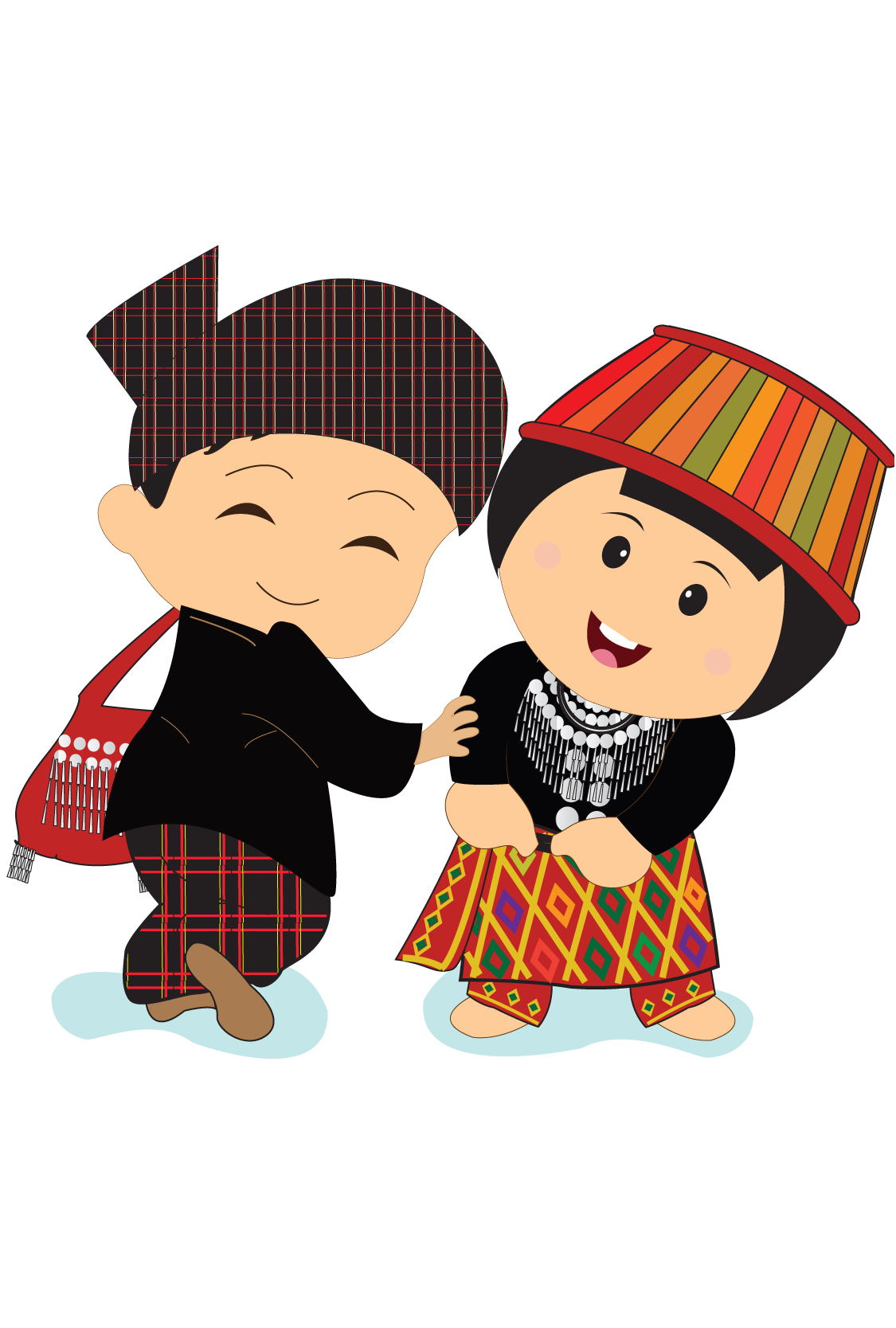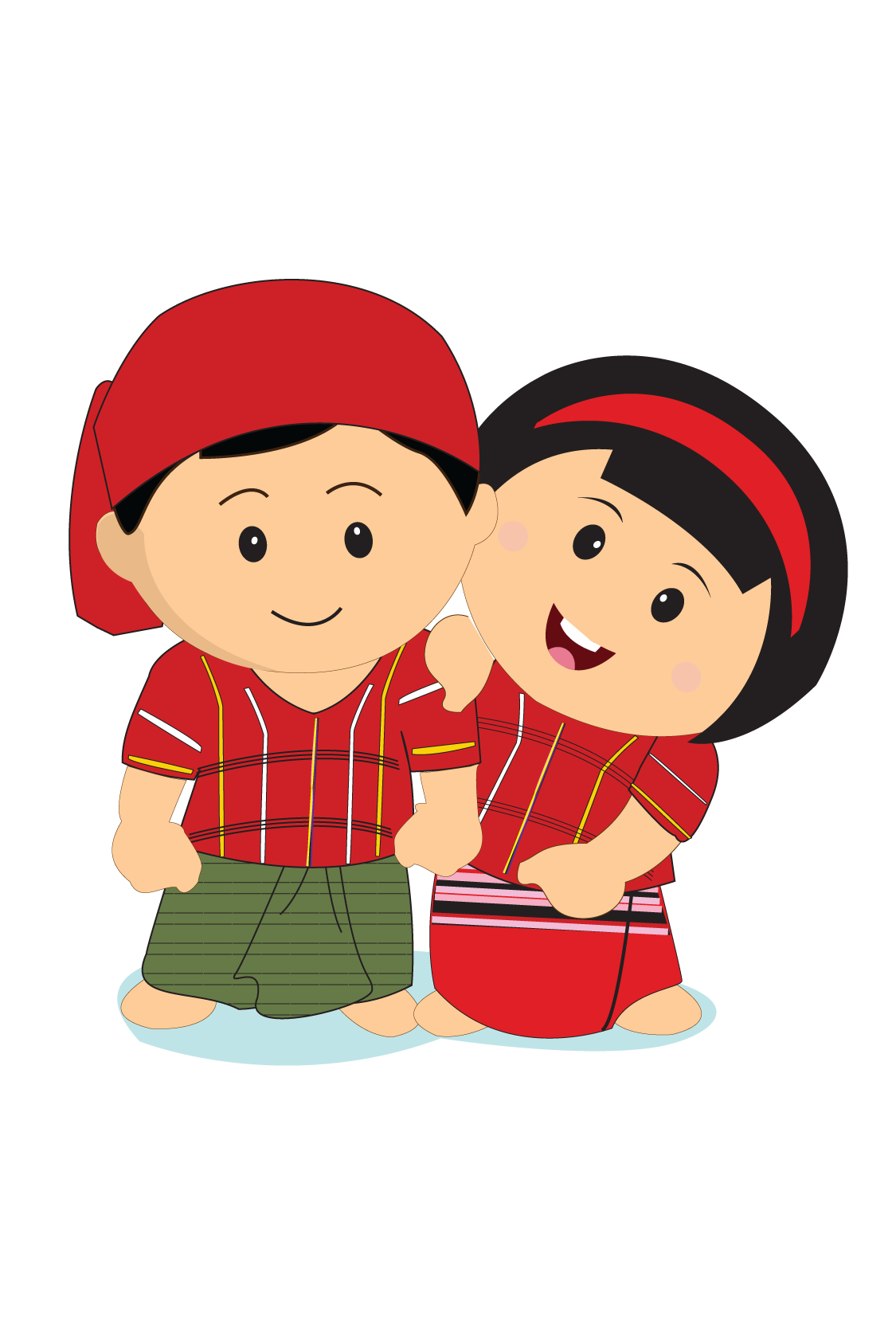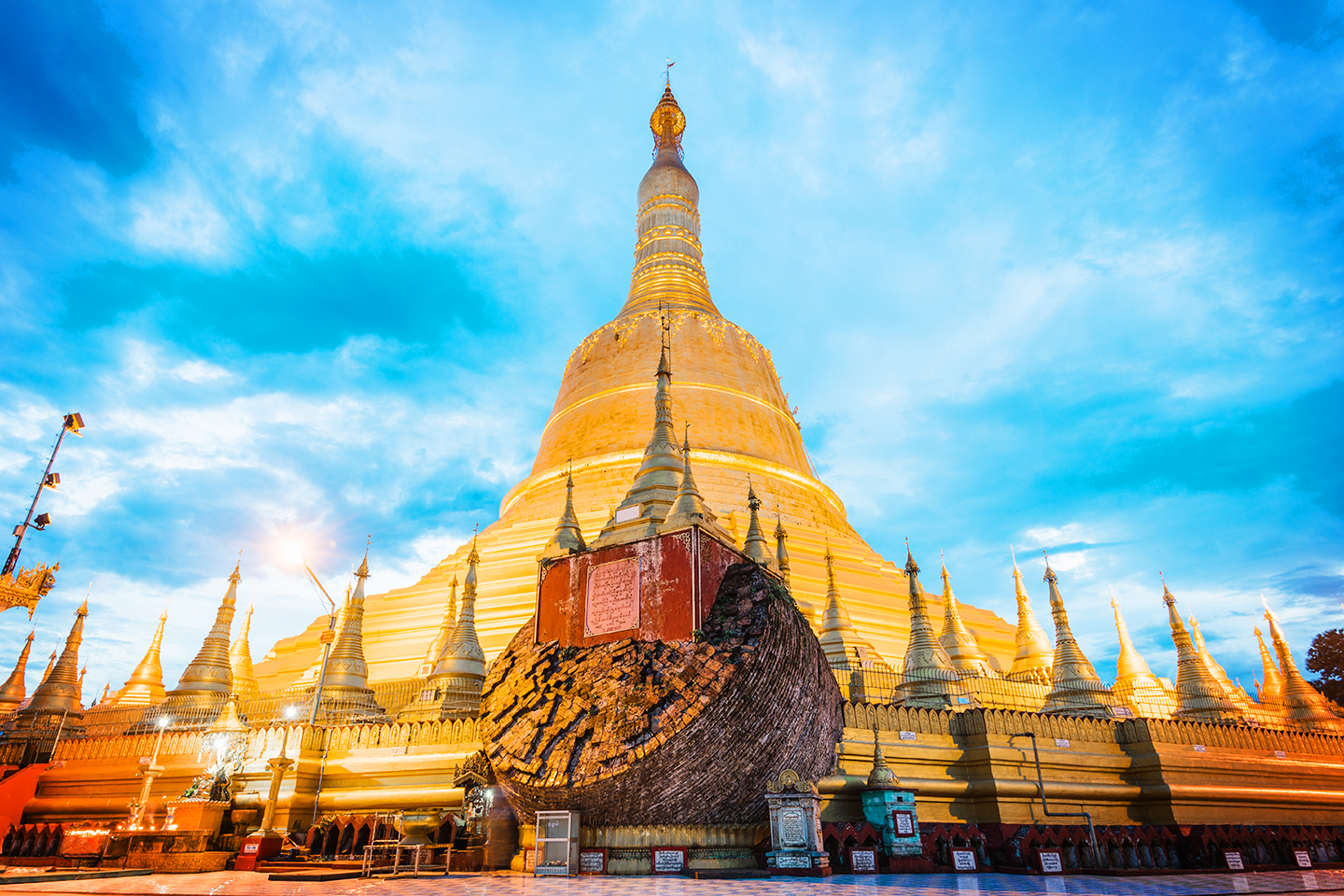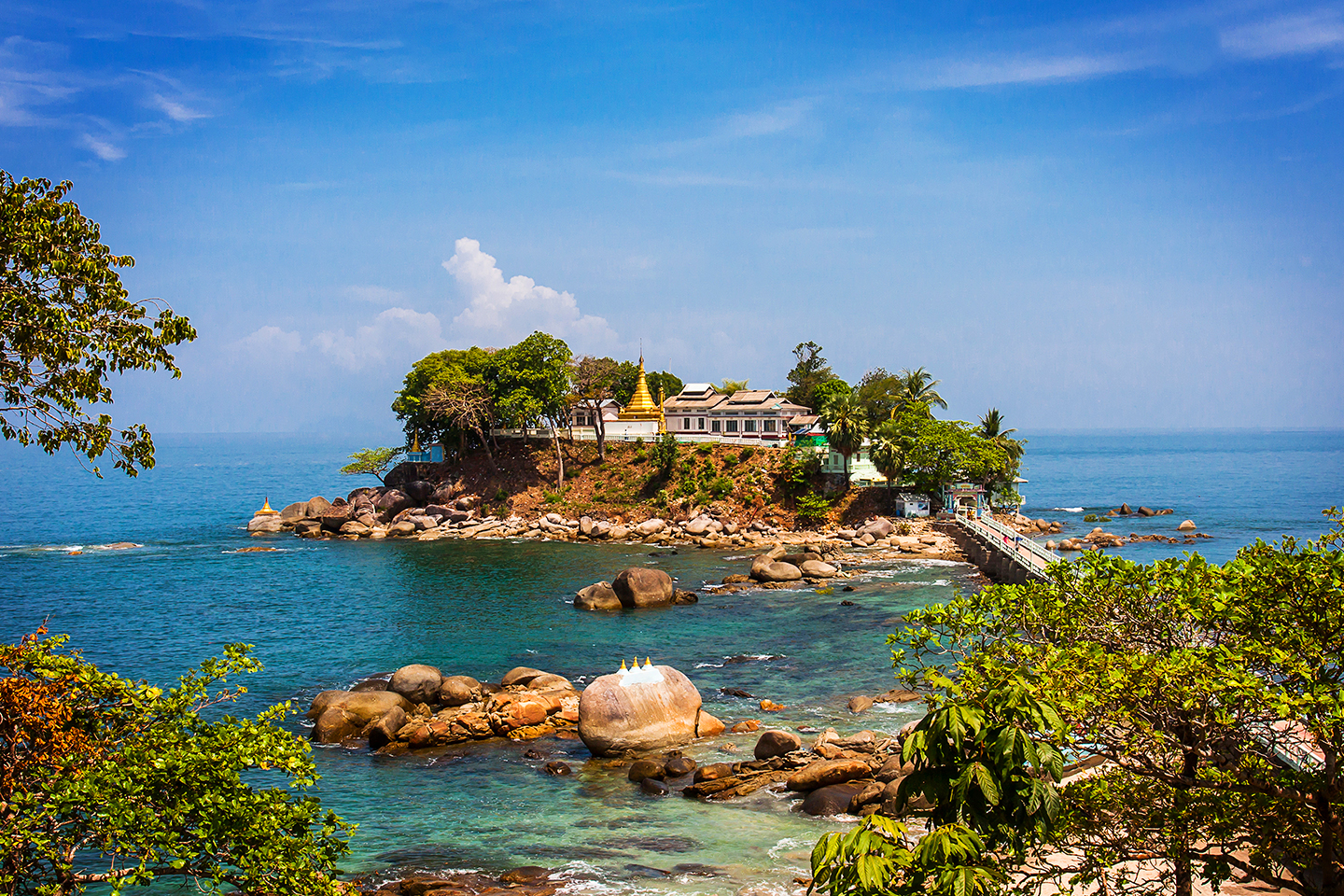Myanmar is divided into seven states and seven regions , formerly called divisions.[150] Regions are predominantly Bamar (that is, mainly inhabited by Myanmar's dominant ethnic group). States, in essence, are regions that are home to particular ethnic minorities. The administrative divisions are further subdivided into districts, which are further subdivided into townships, wards, and villages.
Home About Myanmar
Myanmar (Burma) is a country that covers 676,578 square kilometres (about the size of France) and has a population of 52 million. These people are made up of a striking array of different ethnic groups, which include Bamar/Burmese (by some distance the largest in number), Shan, Karen, Kachin, Chin, Mon, Han Chinese and Indian, to name but a few.
This variety of ethnicities also means massive language diversity, although Burmese is the official language, and English is widely used – to varying degrees of proficiency.
Since 2005, the capital has been located in Nay Pyi Taw, but the former capital, Yangon (Rangoon), remains the biggest city, commercial centre, and arrival point for most visitors. The moving of capitals is in fact in line with the tradition of upheaval and renewal in Myanmar – the country has had many capitals over the years, including Mandalay, Inwa and Mrauk U, to name just a few.
These are 7 states:
These are 7 regions:
Cultures
Myanmar has a deep culture of hospitality and openness – most people who visit are struck by the warm and welcoming nature of the locals, who are often keen to ask questions and make friends. And the people love to enjoy themselves – whether it is taking part in one of the hundreds of festivals that happen around the country throughout the year or enjoying a game of football, everyone loves a boisterous public gathering to lift their spirits.
Festivals

Equestrian Festival
It is held in Pyatho(January).
10th month of Myanmar calendar and the Equestrian Festival is held in this month in the days of Myanmar Kings. Independence day also falls on 4th of January and Athletics competitions are held all over Myanmar as the memorial of gaining Independence from the British colony.

Harvest Festival (Htamanae Pwe)
It is held in Tabodwe(February).
11th month of Myanmar calendar and the Harvest Festival is celebrated in this month to give thanks to the Gods for good harvest and a time to relax and enjoy the well-earned rest. The highlight of this festival is the communal preparation of Htamane or the glutinous rice which includes peanuts, sesame seeds and strips of coconut.

Sand Stupa Festival
It is held in Tabaung(March).
12th month of Myanmar calendar and this month has the Sand Stupa Festival. The Shwedagon Pagoda festival is also celebrated on the full moon day of Tabaung with Pwe Zay (so many variety of shops and snack shops).

Thingyan (Water Festival)
It is held in Tagu(April).
The 1st month of Myanmar calendar and the popular and famous festival is Thingyan festival (Water festival) and all of Myanmar people participate happily in this festival. It falls in Tagu (Myanmar month) or Mid of April of the calendar. This month is the hottest in Myanmar so the people pour water each other since Bagan era. It is also Myanmar New Year.

The watering the Bodhi Nyaung Tree
It is held in Kason(May).
The 2nd month of Myanmar calendar and on the full moon day of Kason, all of the Buddhist people are watering the sacred Bodhi Nyaung Tree. On this day the Buddha was born and and he attained the Enlightenment under this Bodhi Nyaung Tree and also he died and entered Heaven.

Sayetanmae Pwe
It is held in Nayon(June).
The 3rd month of Myanmar calendar and the religious examinations are held for the monks.

The Robe Offering
It is held in Waso(July).
The 4th month of Myanmar calendar and the Robes are being offered to the Buddhist monks in this month and the beginning of the Lent. The monks stay in the monasteries devoting their religious work and not allow to travel during the Lent.

Offerings Month
It is held in Wakhaung(August).
The 5th month of Myanmar calendar and it usually rains heavily. Because of the heavy rain, the Buddhist monks cannot get enough food and offerings from the people, so Myanmar Kings held religious festival to offer food and alms to the monks. From that time, it is a custom to offer the things to the Buddhist Monks.

Boat Rowing Competition
It is held in Tawthalin(September).
The 6th month of Myanmar calendar and the boat rowing competition festival is held.

Thidingyut Lighting Festival
It is held in Thidingyut(October).
The 7th month of Myanmar calendar and another popular festival is Lighting festival. It falls on the full moon day of Thidingyut. It is held after the Buddhist Lent and the celebration to descending Buddha from Heaven after preaching his died and reborn mother in Heaven as god for gratituding to his birth. It last 3 days and they are before the full moon day, the full moon day and the day after the full moon day.

Tazaungdaing Festival
It is held in Tazaungmon(November).
The 8th month of Myanmar calendar and Tazaungdaing festival is celebrated. It is a religious festival and celebrated illuminating homes, buildings and streets. The main activity is offering robes to Buddha Images and to the monks. It is also called "Kahtain". Nowadays the lighted hot air balloons festival is held in Taunggyi. It is very popular and famous festival for the locals and foreigners.

Sasodaw Pwe (Authors' Day)
It is held in Nadaw(December).
The 9th month of Myanmar calendar and in this month, the writers and authors who have achieved success in various fields of Literature are awarded. They travel all over the country to meet their readers and hold seminars and talks.
A BIT OF HISTORY
Kingdoms, dynasties and British rule
The large number of ethnic groups, or nationalities, that make up Myanmar’s population, together with the continual changing of capital cities, reflect a turbulent past. From the 11th through to the late 19th century, Myanmar was ruled by a succession of competing dynasties, the most successful and expansionist of which controlled not only Myanmar but much of what is now Thailand and Laos, as well as parts of India and China.
The hills and mountains that surround the huge Irrawaddy valley form Myanmar’s natural borders and helped to protect it from foreign invasion for many centuries. However, they were not enough to halt the advance of the British Empire, which occupied Myanmar in two stages during the 19th century.












